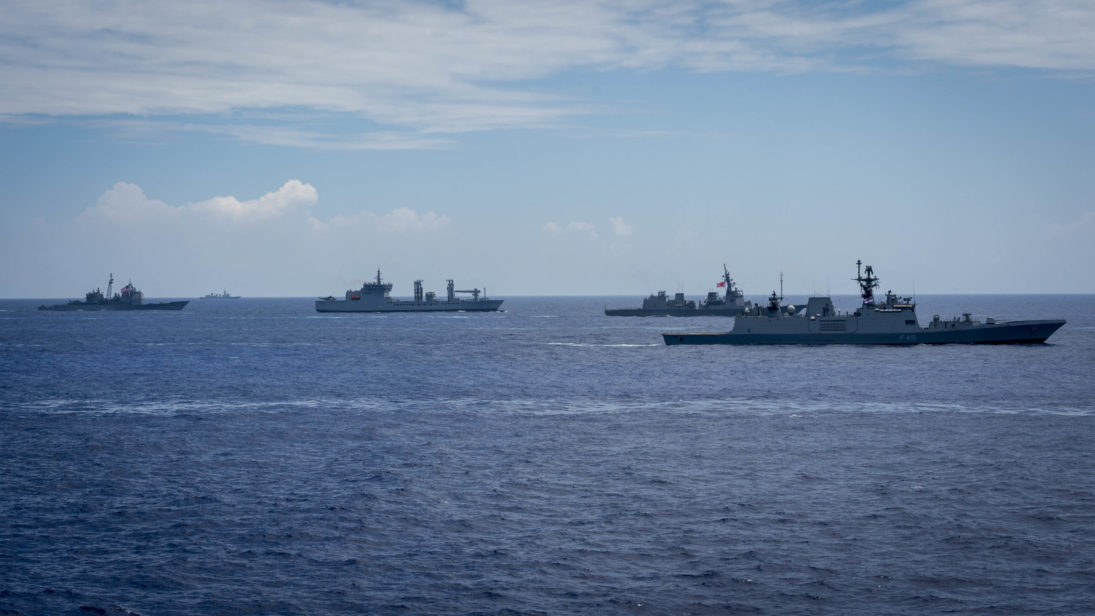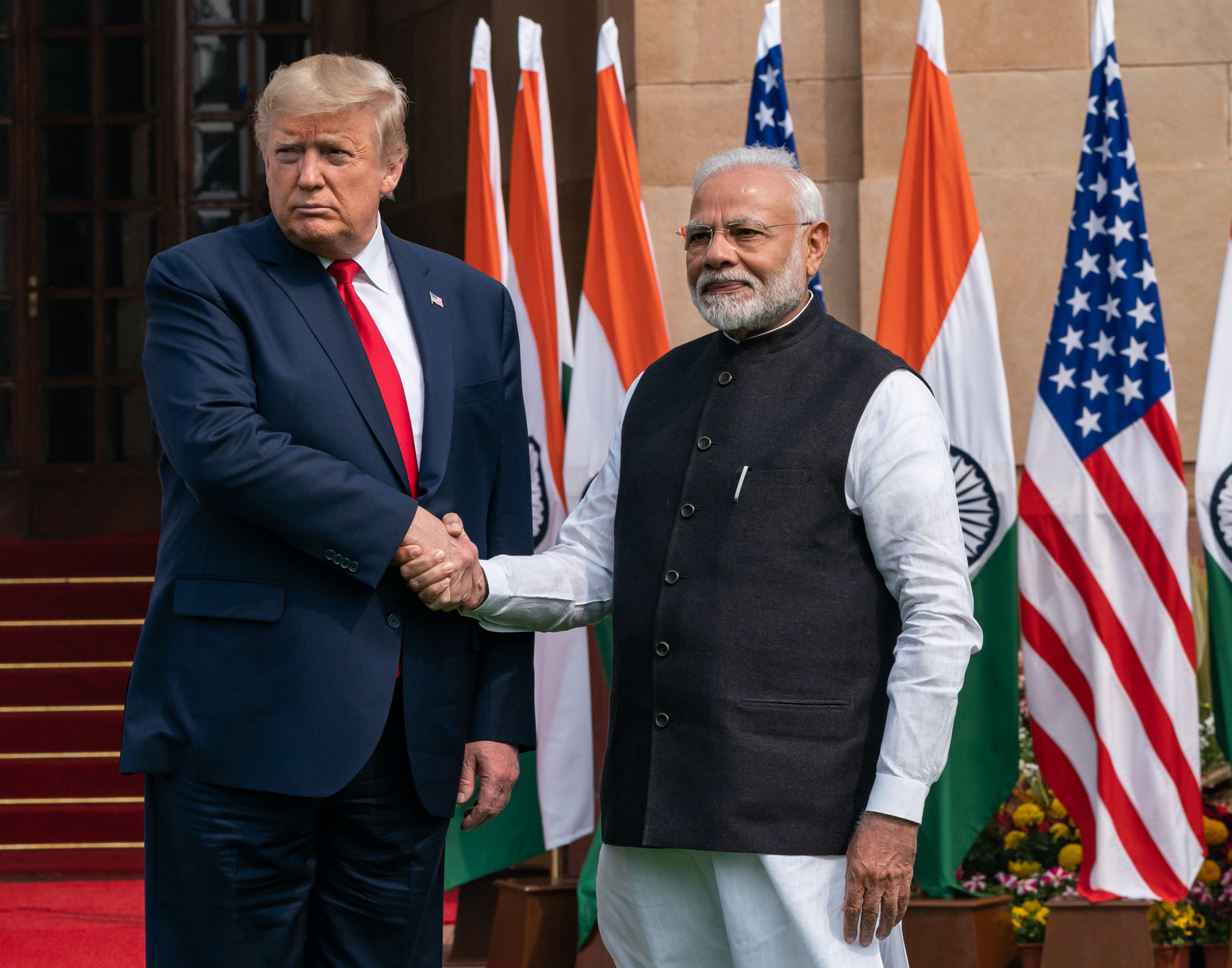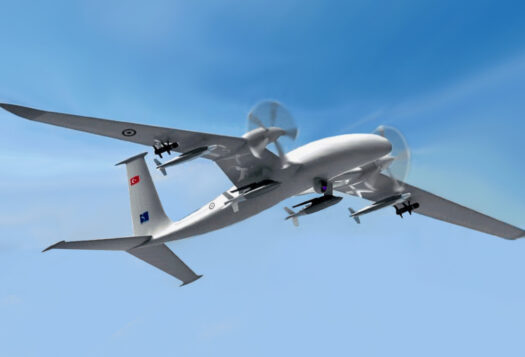
On October 6, the Quad—the informal coalition of Australia, India, Japan and the United States—held its second ministerial meeting in Tokyo.
Despite the Quad’s quick death in 2008, increased Chinese assertiveness in the region led the four countries’ geostrategic outlooks to converge, ushering in the rebirth of the Quad in 2017. Thereafter, the group that for long had been the “Voldemort” of coalitions, began making its way—most recently and noticeably, in all-caps—into official tweets and bilateral joint communiques.
If Chinese behavior over the last ten years led to the Quad’s resurrection, Beijing’s actions over the last ten months of the COVID-19 pandemic gave the group the potent push it needed.
The virus, which has propelled the world into recession and claimed well over a million lives worldwide—including over 300,000 in the Quad nations— traces its origin to Wuhan, China. Beijing covered up the news of the initial outbreak, disseminated misinformation about the virus through the WHO, waged a public relations war, and used an aggressive “wolf-warrior” style of diplomacy to suppress criticism. As a recent Pew Research survey revealed, this contributed to the greatest dip in public perception about China in the developed world in over a decade. At the Quad meeting, U.S. Secretary of State Mike Pompeo did not mince his words in placing the blame on the Chinese Communist Party for making the pandemic “infinitely worse.”
The Quad also observed how, as China and its neighbors were busy containing the pandemic, China continued to carry out grey-zone coercion in South and East China Seas. Its warplanes have been intruding Taiwan’s Air Defence Identification Zone at an alarming frequency—often to protest the international traction Taipei received during the pandemic.
Most importantly for South Asia watchers, the pandemic also saw India-China relations hit the lowest point in their bilateral ties in over 50 years.
Most importantly for South Asia watchers, the pandemic also saw India-China relations hit the lowest point in their bilateral ties in over 50 years. Beijing’s bloodiest face-off took place along the Line of Actual Control (LAC) with India where Chinese attempts to alter the status quo resulted in a violent clash that killed 20 Indian soldiers and a reportedly higher number of PLA soldiers in June (although China has not confirmed a specific number). The stand-off continues as the two sides try to negotiate a settlement, without budging from their stated positions on the LAC.
Expectedly, this has hardened Indians’ views against China, with large numbers calling for a “China Boycott,” and the Indian government receiving overwhelming support for its ban on Chinese apps.
Previously notorious for being the dithering, “weakest link” in the Quad, the pandemic also saw India working to expand its cooperation with its Quad partners.
The last foreign trip President Trump made before the pandemic imposed global lockdowns was to India, where Delhi and Washington unequivocally “decided to strengthen” the “Quadrilateral consultations.” Four months later, India held its first virtual bilateral summit—with Australia. Here, too, the two sides did not shy away from explicitly and officially stating “their commitment to the ongoing Quad consultations.”
This symbolic yet significant show of resolve was accompanied by attempts to enhance defense cooperation.
During the pandemic, India finished finalizing logistics sharing arrangements with all its Quad partners, with the signing of India-Australia Mutual Logistics Support Agreement, and India-Japan Acquisition and Cross-Servicing Agreement.
During the pandemic, India finished finalizing logistics sharing arrangements with all its Quad partners, with the signing of India-Australia Mutual Logistics Support Agreement, and India-Japan Acquisition and Cross-Servicing Agreement. New Delhi already has similar pacts with the United States: Logistics Exchange Memorandum of Agreement; and the Communications, Compatibility and Security Arrangement and the General Security of Military Information Agreement. Adapting to the realities of the time, the Indian Navy continued to enhance its interoperability with its Quad counterparts in a “non-contact format”: it conducted passage exercises in the Western Indian Ocean with the Australian and Japanese Navies in September, and with the United States off Andaman and Nicobar Islands in July.
Recently, New Delhi also established an Oceania Division at the Ministry of External Affairs, headed by an Additional Secretary, a high-ranking official.
This trajectory in 2020 thus far—hardened views on China, a volatile security situation and a growing momentum for the Quad throughout the pandemic—has paved the route to Tokyo.

2020 Tensions Converge at the Latest Quad Meeting
In Tokyo, the four nations signaled their willingness to maintain the pace established earlier this year. The Indian Foreign Minister highlighted that an “in person” Quad ministerial meeting amidst a sea of virtual ones reflected on the growing importance of the Quad “particularly in recent times” as the pandemic posed fresh challenges to the world order. His U.S. counterpart cancelled all other engagements that were part of his Asia tour—in light of President Trump testing positive for COVID-19— and decided to go ahead with the Quad meeting. Japan’s new Prime Minister Yoshihide Suga addressed the foreign ministers, calling for Indo-Pacific nations to enhance “concrete” cooperation. Australia stressed that Canberra has “no more important” partners than the US, Japan and India in the Indo-Pacific.
In veiled or clear barbs at China, the four spoke of the need to work on “maritime safety and security,” “cyber affairs and critical technology,” countering “disinformation,” and making Quad “a force of good” in protecting “precious freedoms.” In addition to “free” and “open” Indo-Pacific, the need to build a “resilient” Indo-Pacific was echoed, arguably to pitch for Quadrilateral cooperation in ensuring that the region is able to withstand economic disruptions, such as those brought about by the pandemic. To that end, three Quad countries—India, Australia and Japan—have already launched the “Supply Chain Resilience Initiative,” which in effect is aimed at reducing global manufacturing’s dependence on China.
Despite individually attesting to the value of their quadrilateral partnership, the four did not release a Quad joint statement. Skeptics argued that the meeting prized “symbolism” over “substance” as the four do not yet have a “concrete” plan for this informal partnership.
As the history of the Quad suggests, a further strengthening of the partnership, and its possible institutionalization, would largely depend on China’s behavior. In the meantime, the Quad will continue to provide a platform for the four to resolve their differences on managing the China threat, as they work on non-controversial “low hanging fruits” to keep the partnership going.
Bilateral and trilateral relations among the Quad countries have increased substantially in recent months and years, a testament to the partnership’s significance. At the level of the quadrilateral, the fact that the Quad, as an informal group that carries—often, perceived—threat of a possible “institutionalization,” itself serves as a deterrent, ultimately reducing the need for such a formalization.
As the Quad seeks to keep clear off “multilateralism for the sake of it,” it is now more relevant than it has ever been.
***
Image 1: Wikimedia Commons
Image 2: The White House via Flickr


